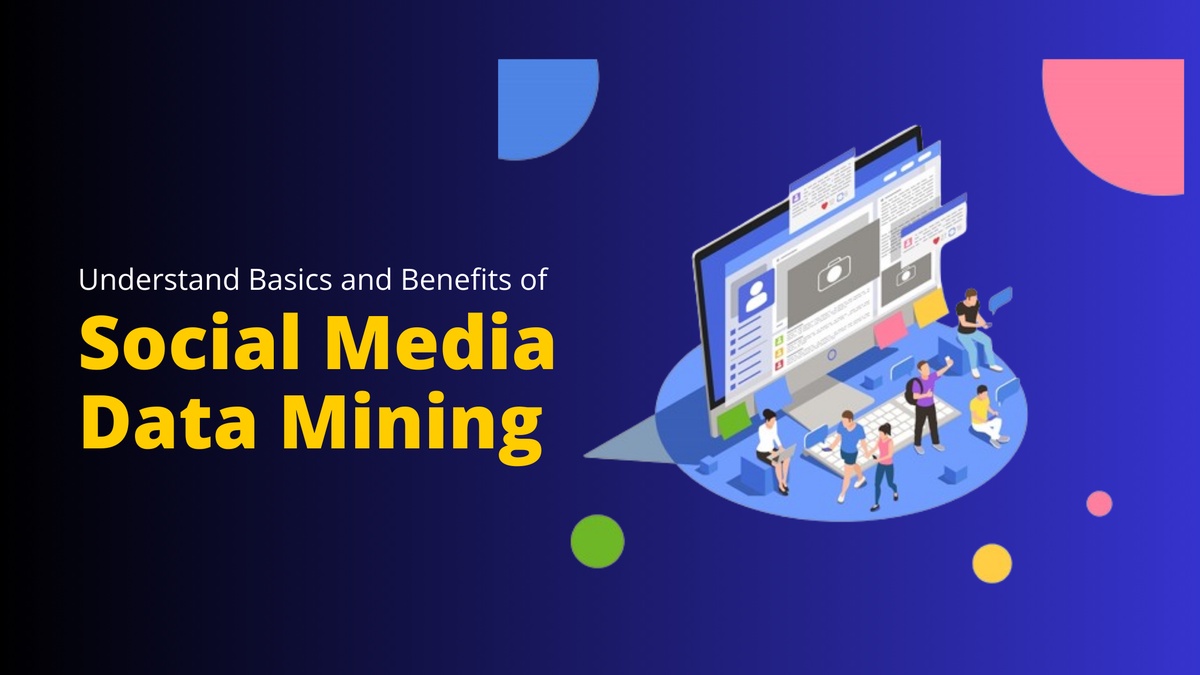Let’s explore social media data mining as a process, the challenges involved, how data-driven organizations benefit from social media insights, and the way forward.
As the world’s digital population grows, so does the usage and reach of social media. Social networks, using which people can access all kinds of information have become an integral part of our daily life. They continue to transform the way we connect and interact with each other on a global scale. Though social media sites were primarily considered to be online communities for younger populations—people of all ages now routinely use these platforms for matters of socializing, politics, business, dating, and daily communication.
As social media permeates our daily lives, platforms such as Instagram, YouTube, Meta, Twitter, TikTok, etc., use the massive amounts of data generated to create user profiles, a snapshot of their interests and behaviors; thus, ushering businesses into the era of social media data mining.
The Process at Glance
In data mining for social media, information from different social media sites is collected and analyzed to identify various underlying patterns and trends. These platforms use algorithms to track and organize clicks, likes, page views, and other user interactions to apply the collected information for informed decision-making, streamline marketing processes, and generate greater profits.
Professional data-mining companies can also scrape or purchase data from different social media sites such as Meta, Twitter, Instagram, etc., along with blogs, forums, news sites, and other public pages where users leave their comments or interact with specific social groups.
The combined unstructured data of profiles, posts, connections images, and so on is then used to identify behavioral patterns. Businesses dealing in verticals such as hotels, airlines, retail, manufacturing, healthcare, etc., use such information to personalize customer experiences and improve their service satisfaction.
Advancements in Artificial Intelligence have made social media data enrichment increasingly sophisticated, given the immense volumes of data companies have collected for years. Machine Learning algorithms and other advanced cognitive technologies can analyze vast quantities of data. They can also interpret jargon, acronyms, and tone to capture the context as well as provide a better measure of the user sentiment. Because of this, businesses are increasingly leveraging social media intelligence to inform marketing, product, and customer service decision-making.
Nevertheless, organizations must walk a fine line between coming off as overly intrusive and catering to specific audiences. They must largely police themselves to remain ethical and in compliance with data mining laws. As data privacy breaches are still a major concern, social media platforms have well-defined policies that govern what kinds of information third parties can use.
Role of Social Media Mining in Business
Businesses, whether big or small, old or new, B2B or B2C can use social media mining in a plethora of ways. A project manager can piece together actionable information from large unstructured datasets using analytical skills. Apart from this, analysts can access automated reports using different social media management tools available, harvest insights from the data, and then prioritize what trends to act upon.
Here's a list of benefits of how businesses can use social media mining:
-
Targeted Advertising
Optimized campaigns and targeted advertising on social media platforms are skyrocketing today. This is because businesses can figure out better ways to identify and address a specific group of audiences. Apart from this, digital marketing executives can use data-mining techniques to determine the best time of day to run a particular ad on a specific digital platform or which messages are most effective among certain demographic groups of audience.
-
Influencer Marketing
Influencers are users with strong follower bases as well as engagement rates on certain social platforms. An influencer can be a high-profile company executive, a blogger, a celebrity, or an external product reviewer who can drive instant hits and clicks via a previously untapped sales channel.
Stakeholders can easily identify social media influencers using data mining techniques. Businesses can use influencer marketing to get the deserving spotlight for their products and services offerings. Careful analysis of social media data enables companies to find the right influencer to promote their offerings and get quality prospects that convert to leads.
-
Market Research
Organizations leverage social media mining techniques to dive deeper and find out more about their customer’s tastes, preferences, and biases. For instance, a company might want to examine the demographic characteristics of its emerging client groups or determine public sentiment towards its brand, logo, content — or even a religious or political group. Businesses also use social media data to gather intelligence on industry peers, specific geographies, or potential partners.
-
Sales Enablement
Apart from collecting information on proprietary products, stakeholders can gather social intelligence on prospective customers or industry peers’ offerings to leverage in an effective sales pitch. For example, a computer component manufacturer can investigate what complaints are surfacing about a PC manufacturer’s goods. Using this feedback and suggestion loop, it can cater to the client’s needs as well as improve the brand sentiment.
-
Predictive Analytics
Machine Learning algorithms and sophisticated techniques can assist in predictive modeling strategies; thus, enabling business leaders to anticipate future customer trends. In addition to this, social media data is also helpful to the healthcare industry and medical community while tracking and predicting the course of disease outbreaks such as the COVID-19 pandemic.
Challenges With Social Media Mining
While social media mining offers myriad benefits, it also possesses some unique challenges. Working with huge amounts of data raises concerns about data accuracy and quality, efficiency, scalability, etc. It also needs costly investments for software and server implementation and storage hardware that handles it.
Collecting data from an array of social media platforms makes it difficult to guarantee that the data is clean and usable. Poor data quality such as inaccurate, incomplete, and duplicate data can wreak havoc on mining and negate the value of insights gained. Apart from this, combining data from different sources introduces the added challenge of standardizing formats.
The immense volume of data required for in-depth mining activities means data mining algorithms must be powerful, efficient, and scalable. Data models must be such that they can be easily updated to increase data velocity or can accommodate new data sources. The size of some databases and their distributed nature implies that some data mining activities need to occur in parallel, where multiple data mining algorithms analyze smaller data sets— all must be recombined to get a complete picture.
Besides, the cost of data mining is a consideration and, in many cases, prohibitive for companies with strict time constraints or fewer resources at their disposal. Social media mining operations can easily reach into the hundreds of thousands of dollars, if not millions, when accounting for the bandwidth, servers, storage, and manpower (developers, data scientists, and so on) that go into the process.
Summing Up
According to the recent Statista social media reports, 88% of industry professionals held that increased exposure was the leading benefit of using social media as a marketing tool. On the other hand, 79% of professionals stated that increased traffic was the biggest advantage of leveraging social media as a marketing tool.
As evident, social media is a treasure trove of insights and mining becomes increasingly important in the present scenario. Organizations must be able to leverage these insights for targeted advertising, competitor analysis, and promotional campaigns that translate to business profits and productivity. Going forward, collaborating with professionals helps organizations to enjoy the benefits.


No comments yet